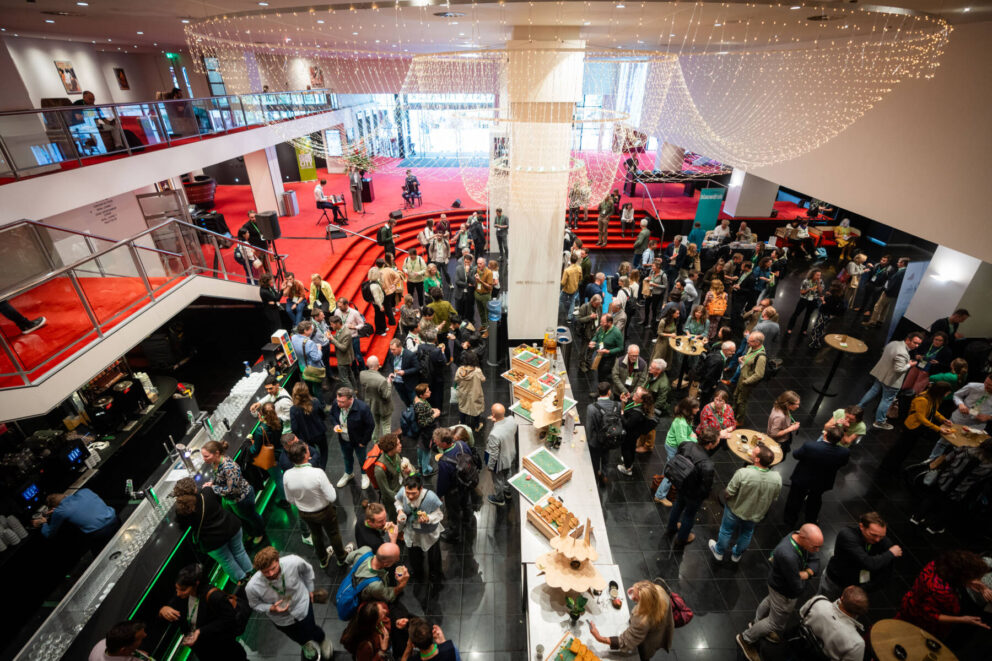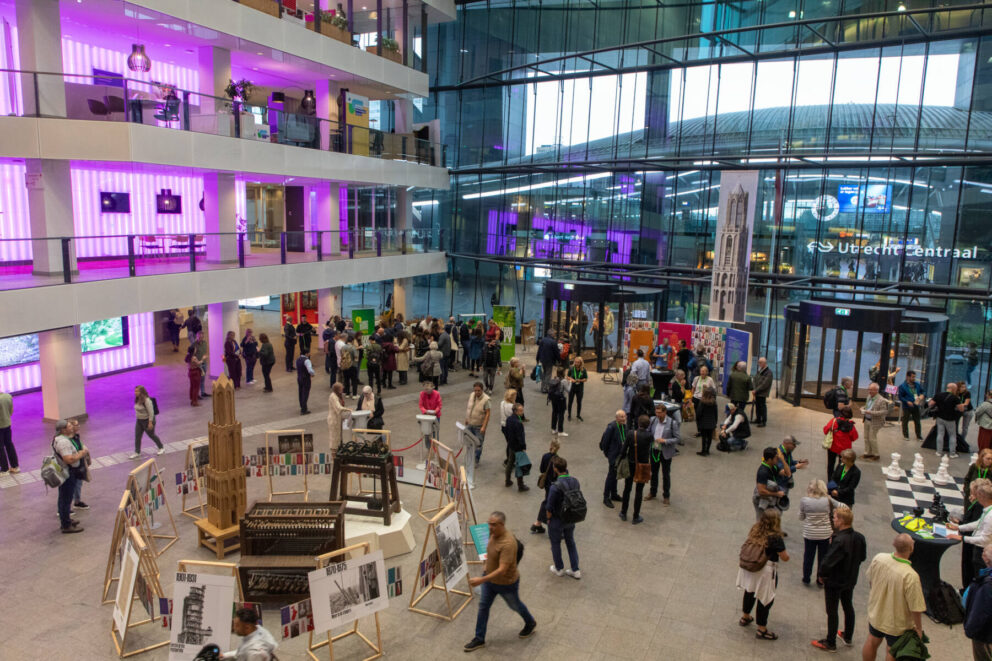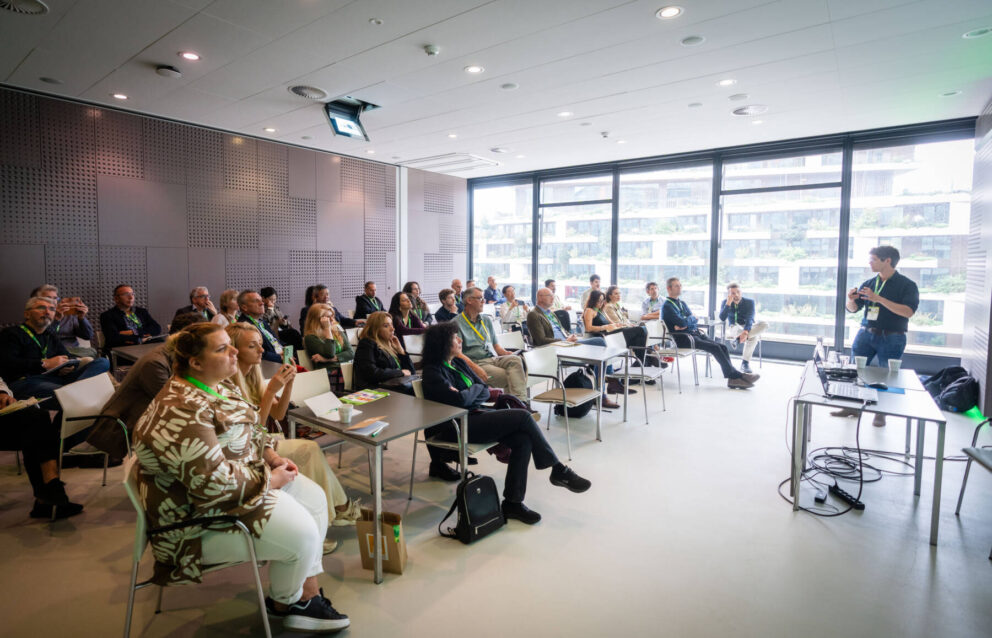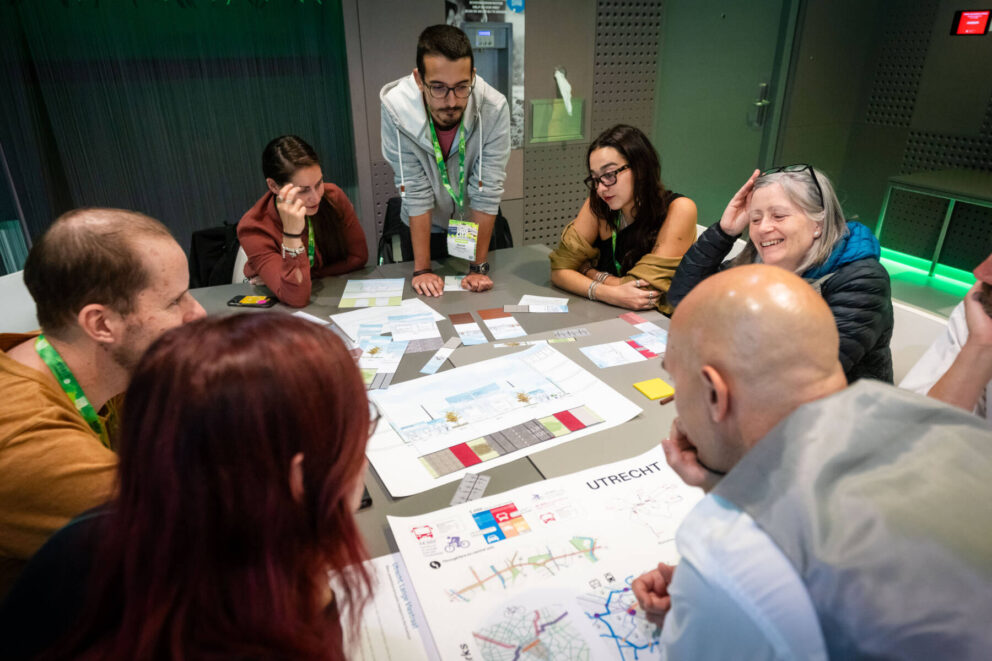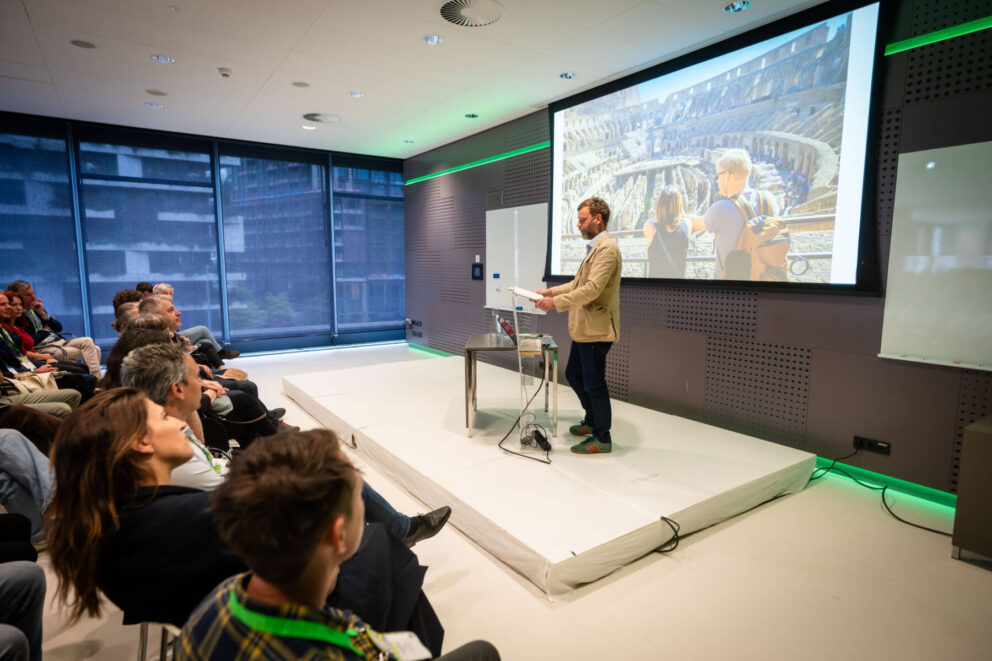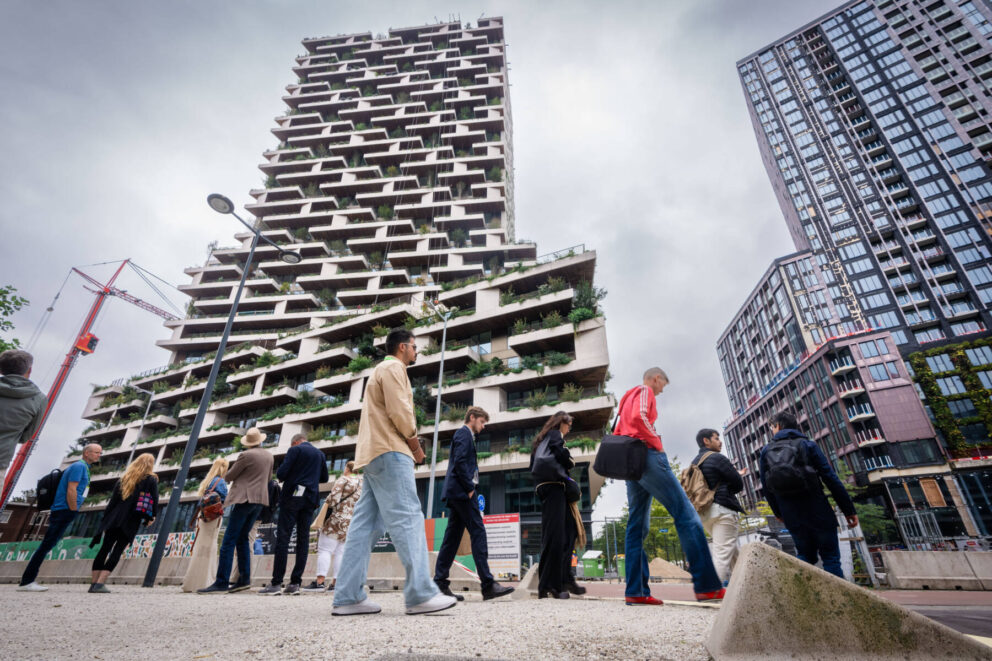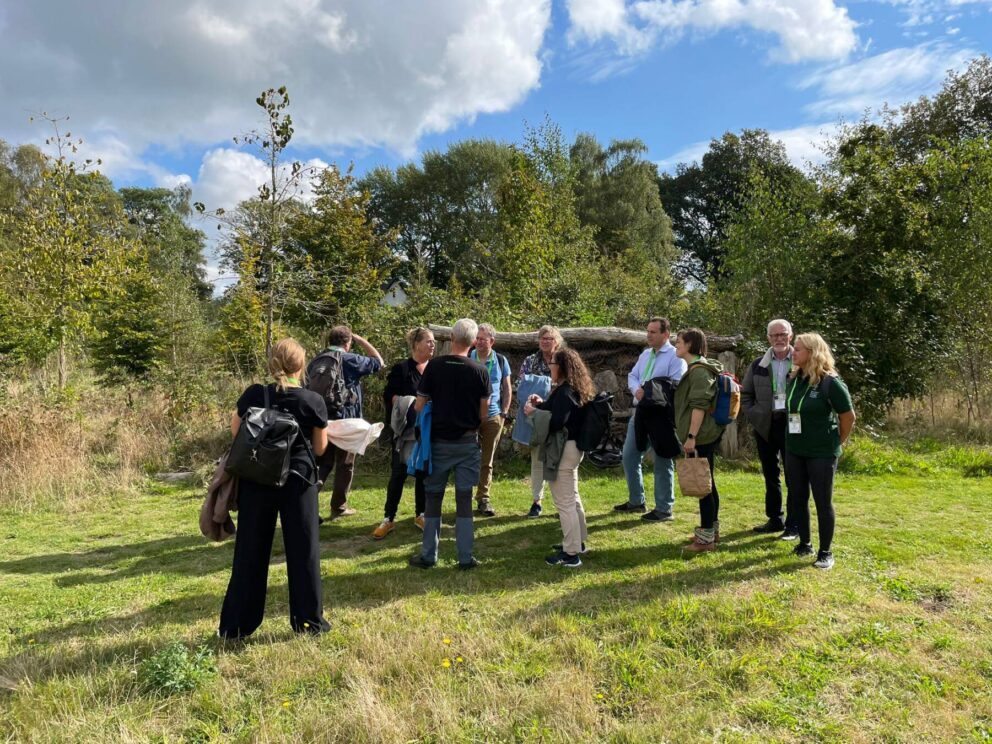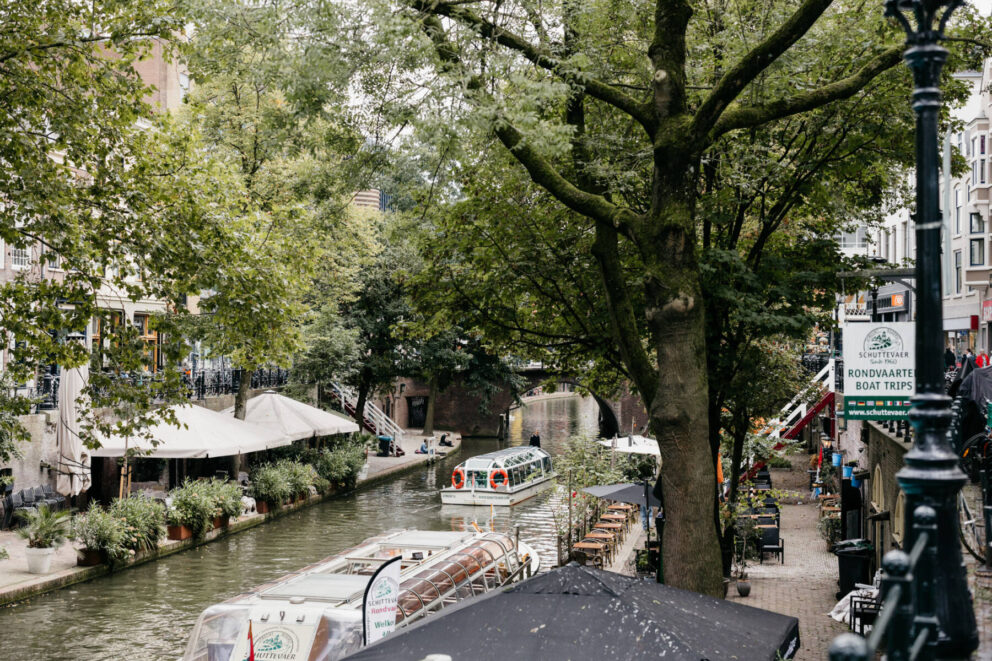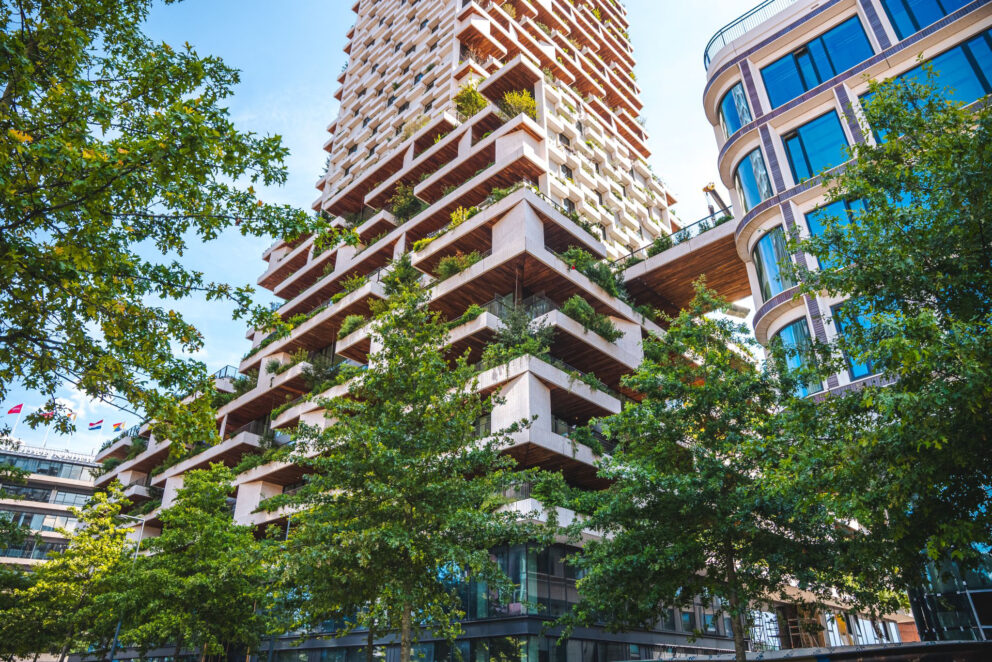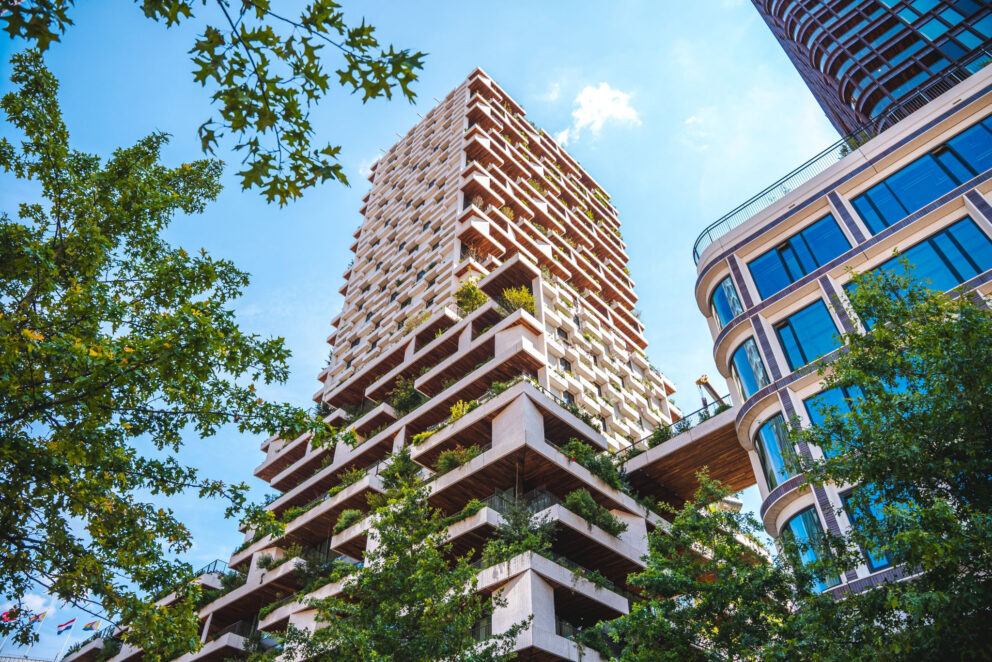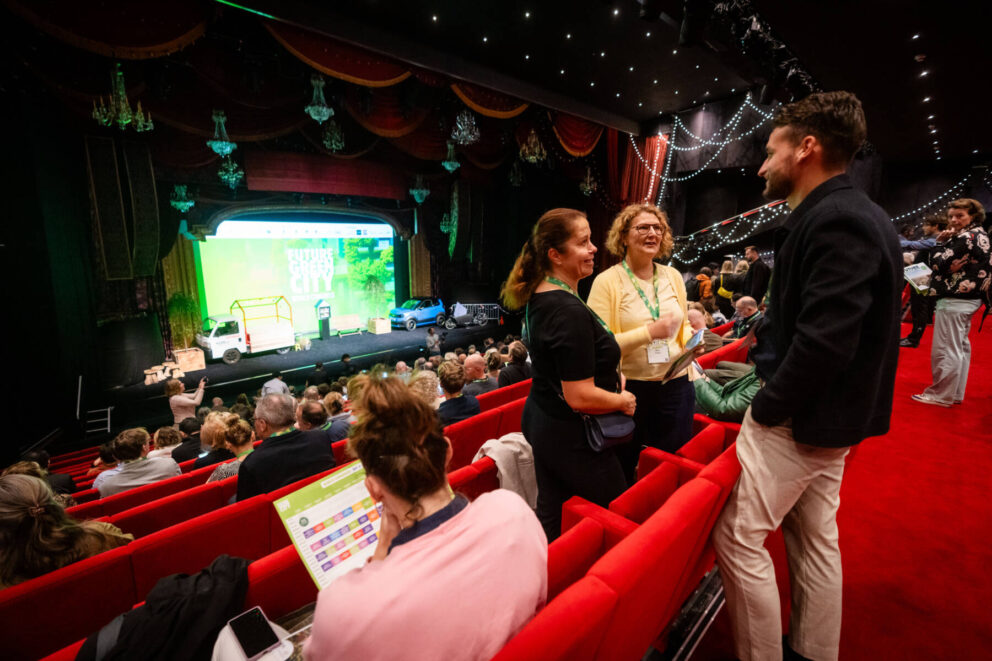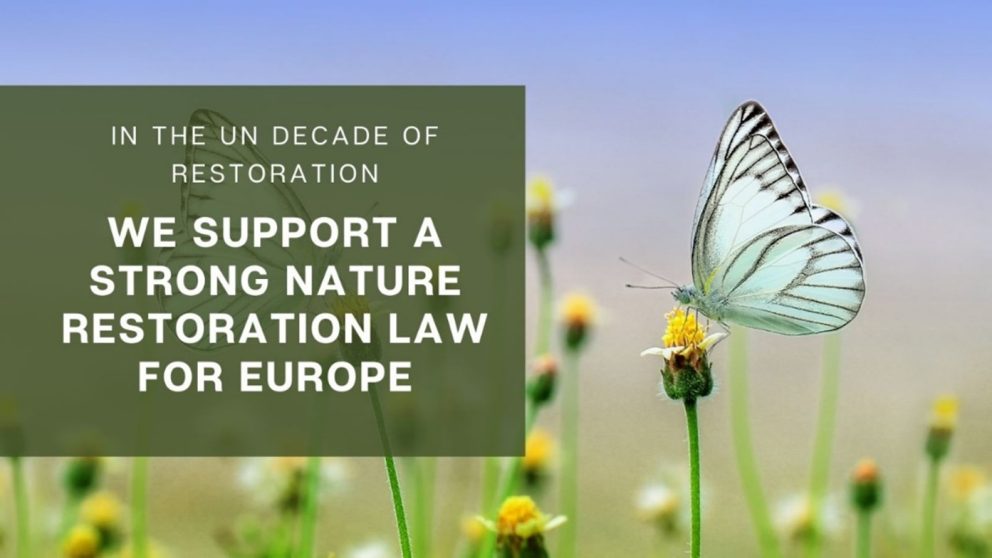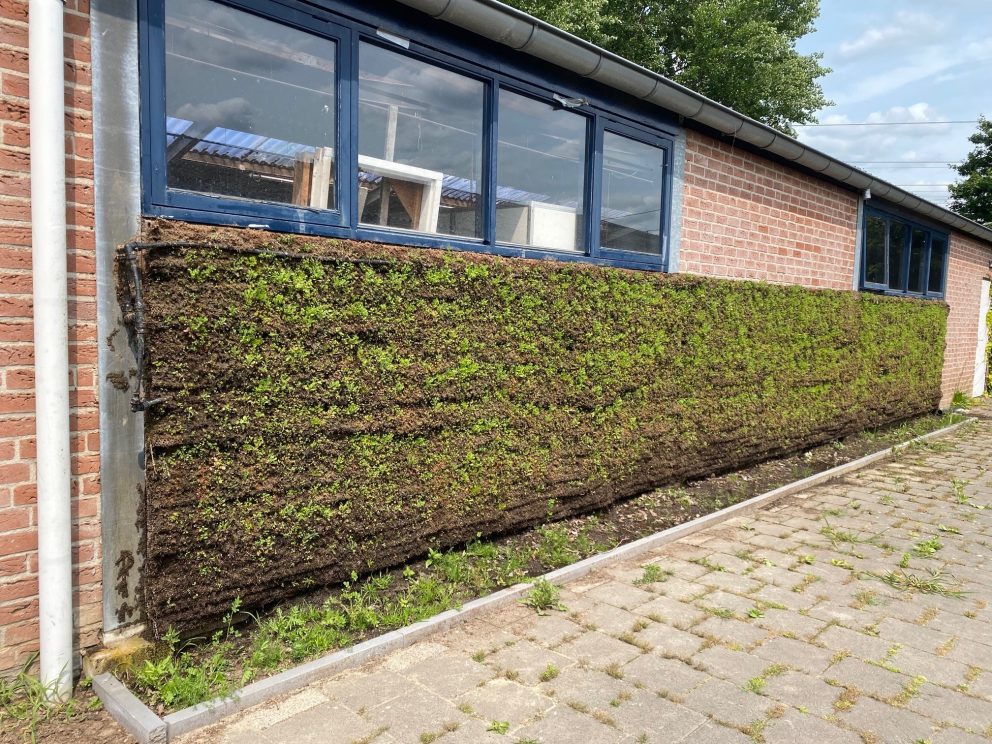The European Platform for Urban Greening engaged in four incredible days of energy and inspiration at the Future Green City World Congress in Utrecht, Netherlands. From 23-26 September, 2024 more than 3,000 experts from nearly 60 countries shared their passion, knowledge, and solutions for the future of green cities. From interactive workshops to urban trails and masterclasses – it was packed with highlights and project partners like Katapult, Royal Ginkel Group, Yuverta, and ELCA look fondly back on their contribution to this event.
On the first day, participants of the Future Green City World Congress visited various Fieldtrips XL in the Netherlands. From the green Railwaypark Tilburg, the challenges of Gouda as a sinking city to the transformation of the Amstel III office area in Amsterdam. Experts took participants to interesting initiatives to see the theory of green and sustainable cities in practice.
Day two was all about inspiring sessions, interactive workshops and innovative presentation that will show how we collectively contribute to a more sustainable world. Among others, John Koomen – Chairman of Dutch professional association VHG (associate partner in our project), and Prof. dr. Marco te Brömmelstroet (UvA, Centre for Urban Studies) warmly welcomed all thinkers and doers to the Future Green City World Congress. Together they set course towards green, sustainable cities with a future for everyone.
Keynote speaker Te Brömmelstroet got participants thinking about the future of our streets and taught us the language of mobility. Kongjian Yu, one of the most influential urban planners, spoke about “sponge cities” – cities that collect, filter and reuse rain and river water through green spaces.
In the afternoon, guests were inspired by speakers like Tina Saaby, who shared cases from Copenhagen and other Danish cities and showed us what a Future Green City in Denmark looks like. Carine Saloff-Coste inspired with her vision of transforming cities into biodiversity hotspots, with a focus on parks and less motorized traffic.
Wonderwoods as Practical Example of a Future Green City
In addition to these keynotes, there were plenty of XL workshops, urban trails, serious games, science labs, classrooms and master classes throughout the day. A beautiful example of a Future Green City can be found across from the Beatrix Theater: Wonderwoods, Utrecht’s own ‘vertical forest’ in the city where the Royal Ginkel Group is responsible for the landscaping with no less than 50,000 perennials and shrubs and 278 large trees applied.
Rainwater is buffered on the 6000 m2 roof surface in both the retention layer and the substrate layer. This also applies to the 4000 linear metres of planters on the facade. Excess rainwater is retained through overflows in the clean water cellar. The required space was created at the expense of parking spaces. Using sensor-controlled measurement and control technology, the water is replenished during dry periods. Considering this housing development project started in 2017, it is quite water-conscious.
Day three of the Future Green City World Congress focused on a discussion about the challenges central to this four-day experience.
In the morning, Siew Leng Fun’s keynote address took us through three interconnected strategies – at the level of islands, neighborhoods and buildings – that have transformed the city into a web of green spaces. Next, Ben Wilson led us through the history of nature in the city, from the Stone Age to the present. He outlined an exciting vision of the city of the future, where plants, urban farms and forests play a central role in the urban landscape.
In the afternoon, Lilli Lička shared her experiences from Vienna, where greening measures and the transformation of street spaces are being tackled together with residents to make the city more sustainable and livable. Adriaan Geuze then took us through iconic public spaces such as Central Park and Park Guëll, showing how these places tell stories about our identity and culture. Anthony-Paul (AP) Diaz, Esq. inspired with his vision of safe and welcoming parks, emphasizing the importance of working with residents to make public spaces accessible and inviting.
The day also featured inspiring XL workshops, urban trails, serious games, science labs and classrooms.
Policy Recommendations for the Greening Cities Partnership
Invited by the Greening Cities Partnership under the Urban Agenda for the EU, the European Platform for Urban Greening contributed to the closing session of the Greening Cities Partnership on Thursday. The Greening Cities Partnership, now in the final stages of developing its Action Plan, will support the EU policy agenda on urban greening at the local level. This plan aims to enhance urban biodiversity, adapt to climate change, and improve citizens’ well-being.
After presenting the CoVE project and its outcomes, project representative Boudewijn Grievink of Katapult joined the plenary discussion where he shared synergies and insights relevant to the Greening Cities Action Plan. He explained how training practices and capacity-building initiatives can be incorporated at local and regional level to help implement and maintain green infrastructure projects in EU cities.
Workshops XL: Integration of Blue and Green
We’d like to point out two Workshop XL sessions where Mark Rotteveel, enthusiastic advisor in circular water systems at the Royal Ginkel Group, shared a lot of practical examples. Mark combines circular water management with greening strategies, exploring how to create healthy, green cities where green spaces can thrive with a guaranteed water supply.
The first one was ‘Innovative Chain Collaboration for Optimum Green’: How do you ensure that knowledge about green (values, application, maintenance) is part of the initiative phase of development and construction projects?
For the greening of the built environment to be a real success, cooperation between all stakeholders is needed. How do you ensure that knowledge about green (values, application, maintenance) is part of the initiative phase of development and construction projects?
The second one was ‘Liquid Gold: New Ways of Dealing With (Rain)Water’, which focused on the successfully integration of circular water management in urban areas. Participants learned about linking ‘indoor and outdoor’ water in fully integrated water systems. During this Workshop XL the participants got inspired by dedicated specialists from the WaterPro Foundation. In existing structures, participants worked through various case studies to design an integrated circular water system for a specific property. They explored barriers related to regulations, finances (business cases) and responsibilities.
Day four was a full day of gaining knowledge and experience through excursions to various cities in our delta metropolis.
The City With A Future Is Green
Green is the answer to almost all pressing challenges our growing cities and urban regions are facing. Green makes you healthy, happy, cools, purifies, provides renewable building materials and food, and provides a natural habitat for every kind of human and animal. All over the world, cities are therefore looking for a new balance between nature and culture and the connection between the city and countryside: the Future Green City.
Urban regions face major challenges worldwide. More and more people are coming to cities to live and work. This puts increasing pressure on urban infrastructure. How do we create enough housing for everyone? How do we keep cities accessible? How do we ensure sufficient energy, food, data connections and other amenities? And above all, how do we provide attractive streets and squares as living rooms of the city and parks as communal gardens, where there is room for everyone?
We see the effects of global warming on a daily basis. On the one hand, our cities are the cause of it: the CO2 emissions released to build houses, run cars, and generate energy are huge. How can we ensure that our cities become much more circular and climate-neutral? On the other hand, cities bear the consequences of climate change: in a petrified environment, heat and abundant precipitation can hardly escape. How can green transformations help cope with climate change and keep our cities liveable? How can we strengthen biodiversity? What civil engineering solutions do we need to green a petrified environment? And how will we properly manage our assets so that they continue to work?
It is precisely in our cities that all the talent is present to find answers to the challenges: scientists, administrators, designers, managers, entrepreneurs, active residents. Cities are breeding grouds of innovation. All over the world, we see more and more fine examples of successful interventions: from small alterations in streets and neighbourhoods to large transformation strategies, from tiny forests to forests encircling the city, from façade gardens to contemporary urban parks, from urban wadis to separate sewer systems.
No wonder that the Future Green City World Congress invited the CoVE project European Platform for Urban Greening to inspire, to exchange knowledge, and disseminate their skills ecosystem to create sustainable, healthy, green urban environments.
Keynote Speeches and Master Classes
The following keynote speakers were part of the Future Green City World Congress 2024: From Asia Kongjian Yu (China) and Siew Leng Fun (Singapore) on ‘sponge cities’ and urban design. Lilli Licka (Vienna) and Tina Saaby (Copenhagen) highlighted urban development in their cities. Carine Saloff-Coste (Paris) and Anthony Paul Diaz (Seattle) spoke specifically on greening the city. ‘Cycling professor’ and city planner Marco te Brömmelstroet and landscape architect Adriaan Geuze provided the Dutch contribution to the keynote programme.
In various master classes hotshots such as Cecil Konijnendijk (of the ‘3-30-300 rule’ on urban green space) and Pier Paolo Mudu (World Health Organization, WHO) shared their knowledge.
Organisation
The Future Green City World Congress 2024 was an initiative of Royal Association Stadswerk the Netherlands and Royal Dutch Association of Landscapers and Gardeners (VHG), who are associate partner in our CoVE project. In Utrecht, they brought together the worlds of green and civil engineering, in cooperation with World Urban Parks (WUP) and the International Federation of Municipal Engineering (IFME). The congress connected construction, greenery, infra and water. By showing different solutions and by connecting networks in these domains, they contributed to building a city with a future.

